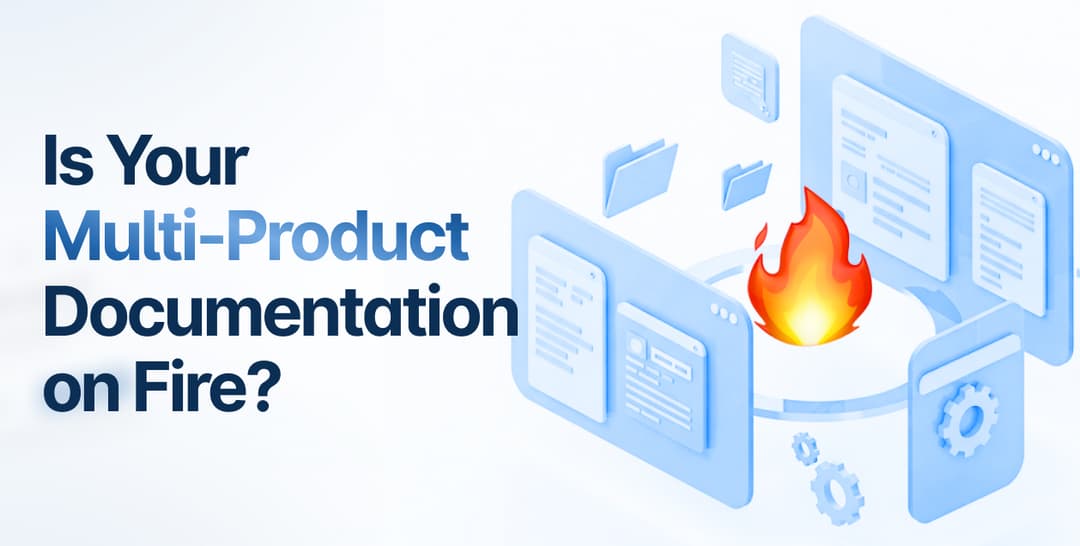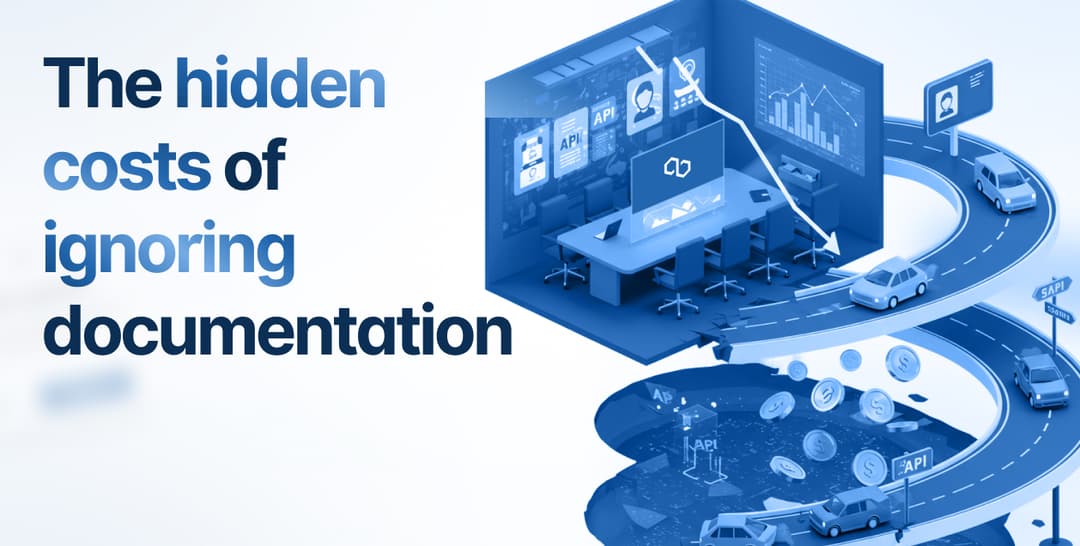How can we define a great technical writer?
An outstanding technical writer has a high level of knowledge about the industry he or she writes in.
They also possess skills that allow them to turn often very complicated subjects into text suitable for a non-expert audience.
However, a great technical writer is also an effective one. The company and clients need to know that they can consistently rely on them to produce top-tier writing.
And consistency depends on creating good habits. In this article, we’ll go through the habits of super effective technical writers and see what makes them so valuable.
Constantly Improving Their Writing Skills
Being a technical writer is a challenging role—you need to have thorough technical knowledge of your chosen subject matter, but you also need writing skills to write about it effectively.
Luckily, you don't have to be born with some special ability to be a good writer. Like every other skill, your writing can be improved.
So, how do you do that?
For starters, one of the habits of great writers is that they read a lot. As Yael Klass, Vice President of Corporate Marketing at Similarweb, points out, reading is crucial for keeping your writing ability sharp.

Source: Archbee
All kinds of content can be useful to read—if nothing else, for exposing yourself to the written word as much as possible.
However, it's logical that reading content adjacent to technical writing would be highly beneficial for improving those skills.
For example, books are still one of the best sources of expert knowledge on technical writing.
Many of them are worth recommending, but Kieran Morgan’s Technical Writing Process is particularly valuable for improving the effectiveness of technical writers.

Source: Goodreads
Why?
Because, as Josh Fechter explains in his recommendation, it has an actionable five-step process that can be valuable for a broad spectrum of technical writers, and it's geared toward modern workplaces that use Agile methodologies.
If you want something available at the click of a mouse, Tech Writing Handbook by Kyle Wilens and Julia Bluff is completely free online.

Source: help.dozuki
It's visually pleasing and provides advice that can help you boost your writing skills.
For instance, below, you can see a passage about the use of articles from a chapter that deals with writing clarity.

Source: help.dozuki
Besides reading more, there's one more thing super effective writers do—they simply write.
According to Michael Harvey, a Principal Technical Writer at SAS, you don't have to overthink it—just develop a daily habit of writing anything.

Source: Archbee
As he explains, that works because it gets you in the habit of paying more and more attention to the clarity of your sentences, paragraph structure, and making a clear point—skills essential for technical writing.
To sum up, effective technical writers take time to improve their writing skills regularly.
You can do the same by immersing yourself in the written word—by reading a lot of relevant content and by writing daily.
Staying Organized
Staying on top of their tasks is a vital habit for technical writers who want to be effective.
Writers who know how to manage their workload are highly rated among their coworkers and clients.
If you think about it, what is the use of quality technical writing if the writer can’t produce it on time?
A part of organizing your work well is ensuring that you stick to deadlines. To do that, you should avoid the planning fallacy, a cognitive bias that causes you to miss deadlines.

Source: Archbee
In other words, this phenomenon is the reason you can find yourself working under nearly impossible deadlines, which leads to unhappy bosses and clients.
The solution for it is fairly simple. According to Kristi DePaul from Harvard Business Review, you should schedule buffer time for factors beyond your control.
As she advises, adding 25% to your original deadline will make it more realistic.

Source: Archbee
One of the reasons highly effective technical writers stay organized and stick to deadlines is that they usually keep a checklist of tasks.
For writers, checklists have significant benefits. With checklists, they don’t have to keep everything in their heads, which prevents errors and oversights.
What does a helpful checklist look like? For example, Ola Rybacka, Content Specialist at TimeCamp, advises structuring it by priorities:
- Projects that need to be completed that day
- Projects that need to be started that day
- Projects that need to be continued that day
- Clients that need to be contacted about deadlines, project issues, etc.
Instead of keeping that to-do list on a piece of paper, you can use software tools like Asana.

Source: Asana
Asana is a great tool both for teams and for individuals. Among its features is a to-do list that you can organize by various criteria, including priorities.
Whether you use an advanced tool like Asana or have only a notebook, the important part is to have some kind of organizational system, as freelance writer Bart Leahy explains.
In his case, that’s a color-coded Excel spreadsheet.

Source: heroictechwriting
As you can see, he has columns for products, customers, dates, and notes, as well as different colors for different task statuses.
Effective technical writers find a way to stay organized—if you want to become one of them, you should find yours, too.
Focusing On Quality Research
People who aren’t familiar with the job of a technical writer might assume that most of it is just sitting in front of a computer and writing.
However, effective technical writers do a lot of work before committing thoughts to paper.
Their process looks more like the one depicted in the diagram from John Espirian below.

Source: Archbee
He argues that writing is the last in the line of the writer’s work process—it wouldn’t be possible to create quality documentation without the phases that make up the fundamental parts of that process.
And research is the part that keeps the rest of the process together.
How much time can it take? That depends on the industry and the writer. For instance, for this technical writer below, it could take as much as 70% of their working day.

Source: Quora
To do quality research, the most effective writers don’t rely only on reading material and digging on their own—although that also can be a way to find valuable information.
An essential part of researching is interviewing subject matter experts (SMEs). If you have them in your company, that can make it easier for you.
They can provide you with valuable insight not only into the subject matter you’re writing about but also into the specific product or service.
It’s much easier to ask a developer what makes the product you’re writing about unique than to spend precious time trying to figure it out on your own.
When you interview SMEs, you should prepare accordingly. According to technical writer Kesi Parker, here’s what to keep in mind:
- Prepare relevant questions
- Use the form of communication that the SME prefers (in person, via email, phone…)
- Help them with their tasks if needed
However you set things up, interviewing can give you the insight you can’t get anywhere else, as Yael Klass points out.

Source: Archbee
Investing time in quality research can make the difference between effective and ineffective technical writers.
The best ones know that research is at the heart of all their writing, so it’s vital to keep it strong.
Taking Breaks From the Screen
Technical writing is a challenging job—all the researching, planning, learning, and, of course, writing can take its toll.
It’s doubtful that you can work for hours without the quality of your work declining.
Taking breaks is essential for avoiding mental as well as physical fatigue. Let’s start with the latter.
You can use a simple strategy to prevent eye strain that can occur after looking at the computer screen for too long—the 20-20-20 rule.

Source: Archbee
According to research, looking away from the screen at a distant object like that can relax eye muscles, reduce the chances of headaches, blurred vision, etc.
That can provide instant relief, but what about a more systematic approach to taking breaks?
There are many ways to do that, and it all comes down to the length of working intervals you can take and still remain productive.
DeskTime did some research and found that the ratio of 52 minutes of work and 17 minutes of rest is the most effective because you commit 100% to work in those 52 minutes and remove yourself from it entirely for 17 minutes.
If you decide to implement that or some other ratio of work to rest that suits your needs, a Pomodoro timer can be very helpful.
You might be familiar with the standard Pomodoro technique of 25 minutes of work followed by 5 minutes of rest.
However, some tools let you create your own intervals, like the Marinara timer.

Source: Marinaratimer
It’s a customizable online timer that allows you to create intervals according to your own preferences.
For example, you can set up the 52:17 ratio we’ve mentioned:

Source: Marinaratimer
Or you might follow the advice of Joshua Smith, a former writing coach at UNC Chapel Hill, who practiced a set of four 55-minute working periods.
And when you find your rhythm, you should use those breaks to rest your mind and body.
For example, Ritika Bajaj from Hackernoon recommends doing chair yoga to relax your body and unwind.
Source: Yoga With Christina - ChriskaYoga on YouTube
Whether you take a walk, listen to music, or stare out the window, taking regular breaks from the screen is essential for your ability to deliver quality output.
Don’t take that lightly—when you’re tired, you certainly won’t perform to the best of your abilities.
Prioritizing Proofreading
Effective technical writers know how important it is to develop a habit of proofreading their own work.
It’s one of the essential skills because it improves the quality of what they write.
Also, it’s not easy to proofread your own writing—you may have to make cuts and edits that are hard but necessary.
Michael Harvey, whom we mentioned earlier, had many of those experiences throughout his career.
For example, he described how he wrote a long paragraph about employment statistics, but during proofreading, he realized that it didn’t support the point he was trying to convey in the article.

Source: blog.sas
However, proofreading isn’t only about making significant edits like that. To get to that point, we should go step by step.
And one of the first steps can be to have a checklist that can help you organize your proofreading.
Below, you can see a part of one such technical writer’s checklist.

Source: hmc.tamu.edu
That particular one has three different levels of editing. Some others are divided into proofreading content, grammar, language, etc.
You can make your own, too, if that’s something that can help you in this process.
But, what can undoubtedly help you in proofreading are software tools.
One of them is Grammarly, a tool that can help you with spelling issues, grammar, fixing typos, sentence structure, and so on.
However, Tom Johnson, a Senior Technical Writer at Google, warns that the vocabulary and specifics of technical writing language don’t always align with Grammarly’s suggestions.
Nevertheless, he says he finds it very useful.
For instance, it helped him identify consistent style issues like his tendency to overuse the word “actually”.

Source: idratherbewriting
Besides grammar, effective technical writers also polish the readability of their documents.
To be effective at technical writing, you have to put the reader first. Regardless of their expertise, readers enjoy a text that presents complex concepts in a simple manner.
Therefore, you can use a tool like the Hemingway editor that’s designed to make your writing clear.

Source: Hemingwayapp
As you can see, it also gives you a readability score. The lower the score, the better the text’s readability, so anything below ten is considered good.
The habit of proofreading is one of the most important for technical writers. You should consider practicing it; the more you do, the better your final product will be.
Asking For Feedback
To become a better writer, you should ask for feedback on your work from your peers. That habit can make your documentation even more effective than it is now.
Feedback is important because, over time, writers can develop bad practices in writing without even realizing it—remember the Tom Johnson example with overusing the word “actually” we mentioned in the previous section?
And while he was able to detect that by proofreading his text, good feedback can help the writer even more.
Ember Stevens, a technical writer at LaunchDarkly, explains how. In her team, every writer submits their changes to the documentation for review.
“You never know what someone else might catch that you didn’t.”
Furthermore, most people appreciate the feedback.
According to research by Jack Zenger and Joseph Folkman, 72% of respondents said their work performance would improve if they got feedback on it.

Source: Archbee
Therefore, asking for feedback is a habit you should consider developing.
Not only could having another pair of eyes on it instantly fix issues with a particular piece of documentation you wrote, but it can also improve your performance over time.
That’s why it’s important to remember that feedback isn’t personal. Bart Leahy had his share of encounters with editors during his freelance writing career, including not-so-pleasant ones.
However, he emphasizes that the person providing feedback isn’t trying to hurt you.

Source: Archbee
So, it’s best to adopt a view similar to this technical writer below shared on Twitter.

Source: Twitter
Asking for feedback, as well as providing it, is easier if you have a great technical documentation tool at your disposal.
Archbee is precisely that. Among its many features, it also allows multiple people to collaborate on a single piece of writing.
That means that, for example, you can use it to ask for input from specific people by tagging them in the comment inside your text, and they can respond with their suggestions the same way.

Source: Archbee
That’s a very effective method of getting feedback from others—everyone can see it, provide their own ideas and give you valuable insight into practices you can improve.
To sum up, feedback is a great way to get insight into your working practices and adopt helpful suggestions from your colleagues. Be sure not to neglect it.
Conclusion
Creating an effective working process is, in essence, simple.
You just need to find the best practices in your field and string them together so they form a system that delivers the best results.
Nevertheless, figuring out what works for you and establishing such a process requires a lot of effort and time.
To find lasting success as a technical writer, you need to form habits that can benefit you in the long run.
Luckily, this article can put you on the right path to becoming a super effective technical writer.
Frequently Asked Questions
Some habits that can improve a technical writer's effectiveness include constantly improving writing skills, staying organized, focusing on quality research, taking breaks from the screen, prioritizing proofreading, and asking for feedback.



